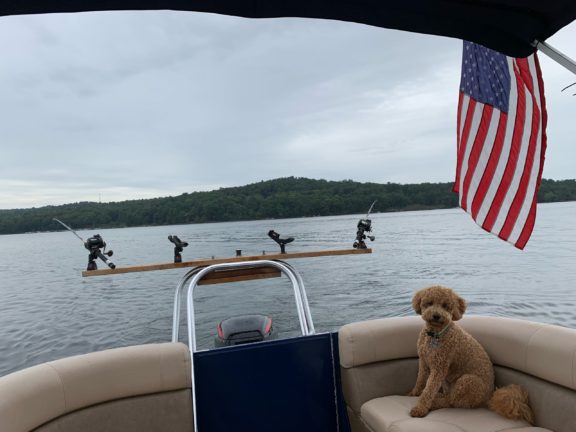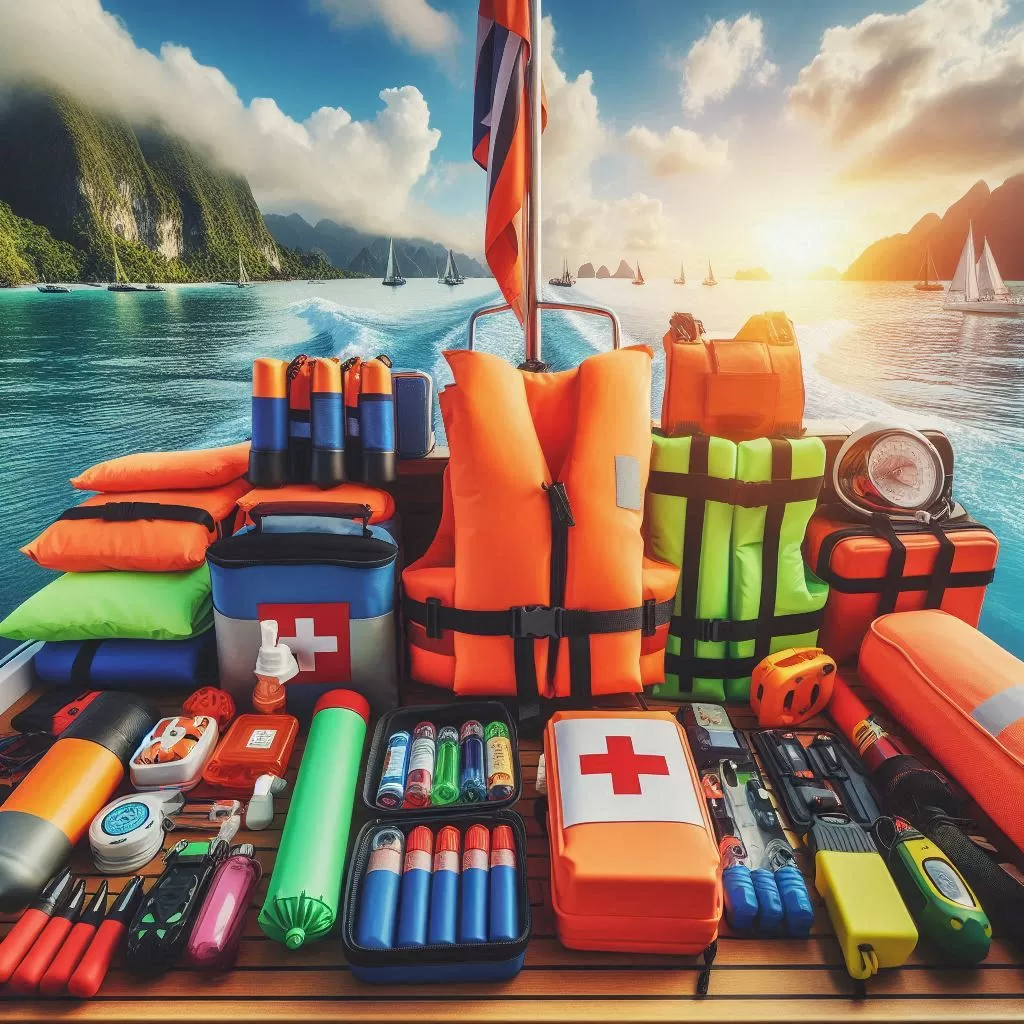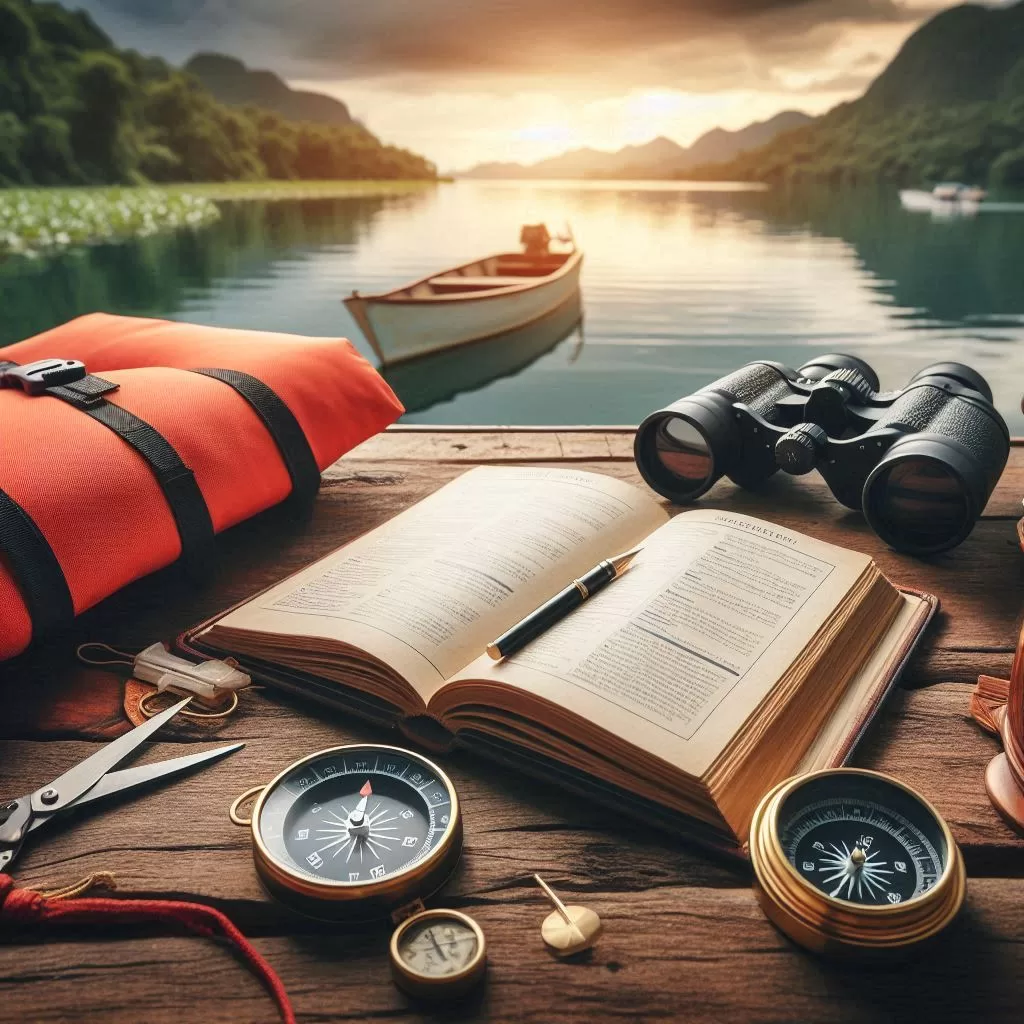I will begin this article by stating the obvious. For those of you that know me, we fish out of a 26ft pontoon boat with a 250hp motor. That’s right, no trolling motor and lots of anchoring when we find a spot we like. No fancy spot lock for us.
We have found that fishing Lake Wallenpaupack is quite the challenge. When you factor in things like learning the lake, understanding the species, feeding patterns and weather, navigate the good advice and overcome the bad, then layer it all together while fishing from a pontoon, that helps explain where we are coming from daily. Even calm, non-windy days can create challenges.
Thankfully, the boat has a SIMRAD system and we can track our path, mark spots and even identify fish on our monitor which is unlike those high priced ones that let you actually talk to the fish. I’m joking but soon enough. Doing our best to learn Lake Wallenpaupack, different fishing styles and continually trying to catch fish is our mission.
We give a lot of credit to the fishing guides and some of the locals that have it dialed in pretty tight. One thing we noticed is that it’s hard to fish for the types of fish (Stripers, Walleye, Bass, etc..) the same way all year long unless you are using bait. Bait is fun and those guys slay fish all day, but we like to use the artificial lures here and there. So here goes our best attempt to explain what we learned about trolling for big game fish on a pontoon.
For starters, where the heck can you place your rods on a pontoon if your wife and family won’t let you drill holes in the rails? You reach out to your fishing buddy and ask for a little help. My buddy said we should build a bracket off the back of the boat. We decided to hang it with a little reinforcement from the ski mount. It must be removable I said, otherwise all hell would break loose at home.
We used a 2×6 board, drilled a center hole for the ski swivel on the top of the mount. We then drilled some holes for large bolts on each side of the center hole and ran another board underneath. This allowed us to run the long bolts up through and tighten it down with some washers and nuts. Once we felt like it was strong enough through tightening, we put for rod holder mounts on top and voila. Again, this isn’t the best setup ever and I’m sure they make custom ones for Pontoons that cost hundreds of dollars, but we did this one for less than $100 bucks. Pretty proud of our effort and the best part is we know it works for both small and big fish.






Here are a few equipment modifications I’ve heard we should be using or are going utilize in the future.
Trolling Plate: So for $100 to $180 dollars you can get a trolling plate for your motor. If you are like me, the 250hp motor in gear at as close to idle as possible has me pushing the boat at about 2.9 to 3.2mph. Too fast for Lake Wallenpaupack trolling. The trolling plate mounts to the lower unit, picture a trap door that closes over the rear of your propeller. This reduces the propulsion that the propeller gives the motor and should reduce your near idle speed in half – so for us, I’d be hoping for 1.5 to about 2mph. I don’t think I’ll use this option as even with the adjustable trolling plates they look weird, probably create some drag and I just don’t want the boat looking junkie. In addition, it’s not natural for a big motor to be dealing with the idea of low idle speeds, it junks up the cylinders.
Drift Net: Is like a windsock that goes in the water, they come in different sizes and cost anywhere from $19.99 to about $69.99. While trolling, the idea here is that the sock slows you down enough to keep you at the speeds you want to be at for Lake Wallenpaupack. Remember, all lakes and species of fish typically require a different touch. Don’t want to buy a drift sock, well I’ve heard of people using 5 -gallon buckets. I’m pretty sure either option will slow you down enough to keep you in the speed range you want to be in…the one thing with drift socks is that they can hinder your ability to turn and does somewhat reduce your steering ability.
This article isn’t meant to be a complete guide, this what we are considering for driving the big toon around the lake. Yes, a trolling motor and a few down riggers would be great but as of right now, that’s not an option for The Blue La Goose.
I can tell you that one big addition to the fishing equipment toolbox was real fishing rods for trolling and a few depth counter fishing reels. The rods are about 9ft long and the reels are Depthmaster’s – again, nothing fancy but better equipped than our spinning reels and rods hanging off the back of the boat.
For stage one of this learning exercise, we began using dipsy divers, if you aren’t sure about those they look like little UFO’s that help keep your lure at depth when the right amount of line and the boat speed are steady.
To get good, you need to practice. There is no book or guide that is going to give it to you exactly how you need to do it…. trial, and error. I figured out my best approach after about an hour and half. I played it safe for the first hour ensuring my divers and lures were in the 15ft range but didn’t actually start catching fish until I was almost a few feet off the bottom. That was this day but other days I’ve heard the fish are suspended up and off the bottom. I trolled the channel for about 3 hours, trying to keep my boat in the 30 to 35ft (depth) range and was marking fish at the bottom. Once I let out enough line and headed into the wind, I had the right speed and depth, fish started biting.
Back to the dipsy diver, it’s a neat little tool and a lot cheaper than down-riggers and anywhere from $10 to $20 bucks cheaper than planer boards. Eventually we’ll get to try these as I have two but want to figure out the dipsy diver game first. The dipsy diver has a release arm that locks into place, which you tie to your reel, when a fish strikes the lure the arm releases and allows the dipsy diver to flow through the water more easily without any resistance. Picture a plate tilted in the water versus the plate being flat – going to come back to the boat way easier if it’s flat and the there is a fish on the other end.
It was decided for us that we’d use a few husky jerks, and we ran an 8-10ft leader off the back swivel of the dipsy diver. We try to use suspension lures versus floating or sinking but I guess it doesn’t really matter unless you stop. With complete honesty, all 6 fish I caught on this 1st real adventure hit one lure and never touched the other one. I think on this day the color was key but it also could have been the color of the dipsy divers too? One was zebra colored and the other was a UV bright – fluorescent yellow. The zebra diver and husky we hooked up on was green, silver and orange. I guess it looked like a yellow perch down there on the bottom.
I hit one spot a little later than when the bait guys cruised through and hit all 6 fish in about a ½ mile location on the lake even though I marked fish all along my journey. Again, I think I finally figured out where to be, early in the day I think I was too high in the water trying not to lose my setup. When I tell you that 5 of my fish were tiny, it’s true. In many instances the fish were smaller than the lure I was using which surprised me. I may try bigger lures in the future, I’ve heard things about those 8 to 9” artificial swim baits.
In summary, this article is lacking in many ways but my goal was to attempt to describe my experience and explain from a first person experience what I was doing. I’m sure it’s flawed but I had a fun day learning a new way to fish Lake Wallenpaupack and my puppy Wally enjoys fishing with me, too. I ended up laughing so hard after I caught a very healthy Walleye, that was easily the biggest fish Wally has seen and when it flipped around on the floor of the boat he almost fell right off the back of the pontoon…then he mustered up enough courage to give it a sniff and a few licks. The perch and bass, well, we were lucky he didn’t eat those….I could tell he was thinking about it……



